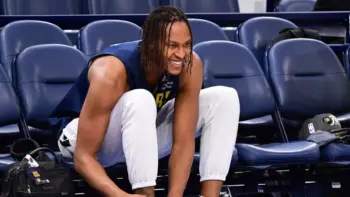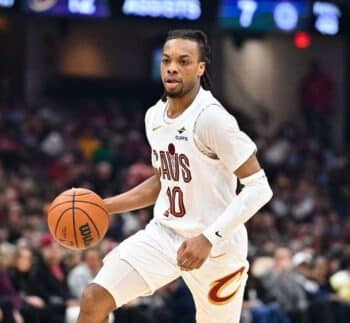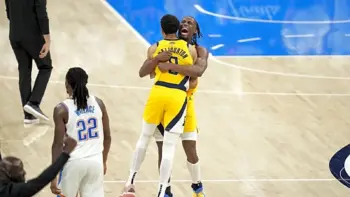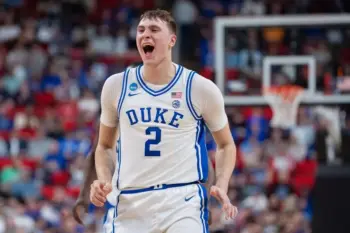NBA
NBA PM: Draft Mistakes GMs Make
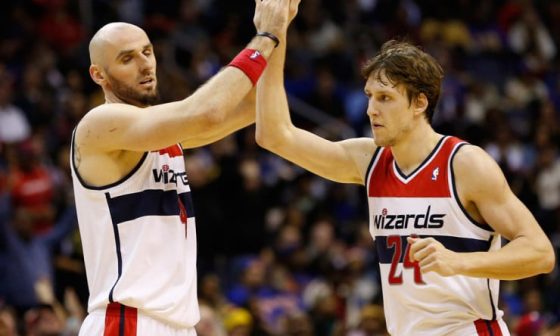
We all make mistakes. Unfortunately, some people’s mistakes can end up costing their employers millions of dollars, and that’s why so much pressure is on NBA general managers to select the right player at each year’s draft.
That seems like it should be easy enough to do, but every year there are executives that make massive mistakes in the players that they select. Here’s a look at some of the most common of those errors, as well as a look at which players could trip up teams this year:
#7 – Drafting players with a questions about character
Why they do it: Because Dennis Rodman is a Hall of Famer. There’s more behind it than that, obviously, with questionable guys like Ron Artest and Amar’e Stoudemire having had tremendous careers despite questions about their character. Those guys are more the exception than the rule, however, and in many cases when a player comes in with a lot of behavioral issues, it’s better to just let them go. No talent is worth locking yourself into a guaranteed first-round pick if they’re going to make the locker room miserable somewhere down the road.
Case in point: Terrence Williams (New Jersey, 11th pick in 2009 draft), Sean Williams (New Jersey, 17th pick in 2007 draft), Sebastian Telfair (Portland, 13th pick in 2004 draft)
This draft’s potential culprit: Robert Upshaw. The seven-foot Washington center is so loaded with talent (and size and athleticism) that there are plenty of people that believe he’d be a top-ten pick were it not for all of his character concerns. He was kicked off of two different college teams and has a history of pretty serious drug use, but talent like his could be enough to hypnotize a team into giving him a guaranteed first-round contract anyway. He’s better off left to the second round, where a gamble like that makes more sense.
#6 – Drafting players with histories of injury
Why they do it: Because injuries heal, but talent is forever. At least, that’s what teams tell themselves when they use a first-round pick on a player who faced a lot of injuries in college. Every year, some player with injury concerns drops and drops and drops down the draft board, but every year there’s also a previously injured player who gets taken very, very high. In some cases, things work out okay (Kenyon Martin, Kyrie Irving), but other times (like with Greg Oden), it can be devastating. If all things are equal, and a GM has a choice between a player known for being hurt or a player with a clean bill of health, why not just draft Kevin Durant?
Case in point: Greg Oden (Portland, 1st pick in the 2007 draft), Brandon Roy (Minnesota, 6th pick in the 2006 draft), Wayne Simien (Miami, 29th pick in the 2005 draft)
This draft’s potential culprit: Rashad Vaughn, Chris McCullough. Almost every year it’s a high draft prospect coming off a serious injury who makes this conversation interesting: Joel Embiid, Nerlens Noel, Kyrie Irving. This year, though, the top guys are all pretty healthy, and while Tyus Jones has shut down workouts the rest of the way because of minor back injury, Vaughn is a guy who got shut down only 23 games into his freshmen year because of a torn meniscus in his knee. He opted to have the cartilage removed a la Derrick Rose, Russell Westbrook and Eric Bledsoe, and that could cause issues for him down the road, just like it could for all those other players.
McCullough, meanwhile, a freshman power forward out of Syrcause, suffered an ACL tear back in January and hasn’t played since. He’s a bubble first-rounder, but it’s easy to wonder if a safer selection in the late 20s wouldn’t be wiser. Leave an injury risk like that to those offering non-guaranteed contracts.
#5 – Drafting for potential rather than experience
Why they do it: Because open air is better than a closed ceiling. How many times do we see teams go with a kid that might be good rather than a player who already is undeniably reliable? Usually, the “potential” guys that succeed are the ones that pretty much everybody agrees on. The ones with a considerably smaller success rate are the “hope-so” guys, and that’s where the problem lies. You’re probably not going to strike out with LeBron James over anybody else in that amazing 2003 draft, for example, but in 2001, when three of the top four players were high schoolers, we saw a lot of faith poured into young guys when plenty of proven college studs were available. It gets teams into trouble more often than it saves them, even in the years since high school kids were banned from the draft.
Case in point: Jonathan Bender (Toronto, 5th pick in 1999 draft ahead of Richard Hamilton, Andre Miller, Shawn Marion, Jason Terry, and more), Kwame Brown and Eddy Curry (1st and 4th picks in 2001 draft ahead of Jason Richardson, Shane Battier, Joe Johnson, Richard Jefferson, and more), Shaun Livingston (LAC, 4th pick in the 2004 draft ahead of Luol Deng and Andre Iguodala), Marvin Williams (Atlanta, 2nd pick in 2005 draft ahead of Chris Paul and Deron Williams).
This draft’s potential culprit: Myles Turner, Devin Booker. Coming out of high school, Turner was one of the top five prospects in the country, so expectations were extremely high for him his freshman year at Texas. He underwhelmed there, however, but it’s his athleticism and seemingly endless potential that still has him slated as a lottery pick despite his inability to dominate on the NCAA level. Any team drafting him would have to hope he wouldn’t be equally disappointing as a pro. There are plenty of players available in that range that are much surer things.
Booker’s issue, meanwhile, is the same as every other player coming out of Kentucky; they did a lot as a team this year, but no player on that roster has really been given the opportunity to shine as an individual. Booker’s drawing a lot of attention as the draft gets closer; it’s just impossible to know how he’d do as a team centerpiece rather than a role player.
#4 – Trying to find the next big international success
Why they do it: Because American stars are a dime a dozen, but international stars are harder to find. Also, there are times when a team wants to take advantage of a foreign market for financial reasons, and that helps fuel drafting an international prospect as well. There was a while there where European players were picked like crazy, but those selections have tapered off the last several drafts, where only a handful of international prospects are chosen in the first round.
Despite their popularity, though, not all of these Euro kids will work out. So few international players become superstars, and there’s huge flop potential for these unproven players. That’s why drafting them is so scary. As far as risk vs. reward is concerned, it’s about as bad a payoff as you can get in a draft.
Case in point: Yi Jianlian (Milwaukee, 6th pick in 2007 draft), Fran Vasquez (Orlando, 11th pick in 2005 draft), Darko Milicic (Detroit, 2nd pick in 2003 draft), Nikoloz Tskitishvili (Denver, 5th pick in 2002 draft), Frederic Weis (New York, 15th pick in 1999 draft)
This draft’s potential culprit: Mario Hezonja and Kristaps Porzingis. Both players are pegged as top-ten selections, and scouts love them, but it really has been challenging the last several years to determine which international players were going to prove worthy of a first-round gamble. A lot of these young European players are coming from storied Euro programs for which they aren’t even playing big minutes, so it varies greatly how they adjust to the league.
In recent years there have been some that have succeeded (Giannis Antetokounmpo, Rudy Gobert, Nikola Mirotic) and some who did not (Lucas Nogueira, Jan Vesely, Bismack Biyombo), so it’s really anybody’s guess how Hezonja and Porzingis will pan out. For a GM to draft either just to look smarter than everyone else drafting American players is just silly. With more tape on some of the safer picks, it would be much easier to take the known commodities.
#3– Drafting big
Why they do it: Because you can’t teach height. The best seven-footers in league history have been borderline unstoppable, so teams often find themselves erring on the side of tallness. There have been myriad times when a tall, unskilled player has been selected over a smaller, much more skilled one, and it’s all done with the hope that they’ll strike it rich with an influential big guy. Unfortunately, the list of gigantic flops (pun intended) is pretty depressing, and this is a mistake GMs will never stop making because the potential payoff is entirely too big. Literally.
Case in point: Bismack Biyombo (Charlotte, 7th pick, 2011), Hasheem Thabeet (Memphis, 2nd pick in 2009 draft), Patrick O’Bryant (Golden State, 9th pick in 2006 draft), Mouhammed Saer Sene (Seattle, 10th pick in 2006 draft), Pavel Podkolzin (Utah, 21st pick in 2004 draft), Sagana Diop (Cleveland, 8th pick in the 2001 draft), Michael Olowokandi (LAC, 1st pick in 1998 draft)
This draft’s potential culprit: Frank Kaminsky, Myles Turner. In a lot of drafts there usually is a gigantic guy slated for the first half of the first round with no exceptional skill other than the fact that he’s huge. Jakob Poetl would have been that guy had he come out this year, but his having stayed at Utah doesn’t really leave a whole lot of candidates for this year. Karl-Anthony Towns and Jahlil Okafor are tall but highly skilled, as is Frank Kaminsky. Turner has a lot of questions about his game, and his seven-foot frame won’t hurt his stock, but he’s not just a get-in-there-and-foul-their-best-big-man kind of player, either. Perhaps GMs are wising up to how unsuccessful this drafting strategy has been in the past, or maybe this year is just an anomaly. Either way, if a team is going to draft a big guy, he needs to have a skillset that actually translates to the NBA. Very often in the past, this has not been the case.
#2– Drafting undersized players
Why they do it: This is most common when it comes to drafting 5’11 point guards and 6’7 power forwards, and success stories like Muggsy Bogues, Spud Webb, Charles Barkley, and Dennis Rodman are enough to make GM’s think that success can be repeated. Modern examples like Isaiah Thomas and Carlos Boozer haven’t helped buck the trend, either, but too often we see teams take risks on guys that are clearly too small to play their best position in the NBA because there’s the hope that talent transcends size. Occasionally that can be true, but more often the end result is players who are physically overpower at the next level.
There’s a reason guys like this often slip to the second round; teams don’t want to guarantee contracts to players they aren’t sure can make it to the next level. Occasionally, though, these guys go way, way higher than they should, and that’s where the biggest mistakes are made.
Case in point: Johny Flynn (5’11, 6th pick in 2009 draft), Ike Diogu (6’8, 9th pick in 2005 draft), Sean May (6’8, 13th pick in 2005 draft), Mike Sweetney (6’8, 9th pick in the 2003 draft), Speedy Claxton (5’11, 20th pick in 2000 draft)
This draft’s potential culprit: Montrezl Harrell, Jordan Mickey. Teams don’t really want undersized guys anymore; they want tall people who play like small people, and for that reason there seem to be fewer and fewer undersized point guards and power forwards finding their way to the top of teams’ draft boards. Isaiah Thomas, at 5’11, has proven it can be done, but it’s not anywhere near the norm. Teams just don’t take those kinds of risks anymore. Harrell and Mickey are both slightly undersized as power forwards at 6’8, but they’re as close as it gets to undersized studs in this draft.
#1– Drafting for need over best player available
Why they do it: Because it’s the logical thing to do. Logic doesn’t always equal success, however, and that means we’ve seen some very logical picks go very wrong in the past. If you’re the Portland Trail Blazers in 1984 and you’ve already got Clyde Drexler, it doesn’t make a lot of sense to draft Michael Jordan, does it? Go with size instead, you tell yourself. The rest of this story you know, but it dramatically illustrates how drafting for need can go wrong.
It can also go right, but occasionally this tactic gets GMs into trouble. In the big picture of big mistakes, however, this isn’t the worst one by far.
Case in point: Sam Bowie (2nd pick in 1984 draft ahead of Michael Jordan), Darko Milicic (Detroit, 2nd pick in 2003 draft ahead of Carmelo Anthony, Chris Bosh and Dwyane Wade).
This draft’s potential culprit: Philadelphia at pick #3. Everybody assumes that Towns and Okafor will be the first two picks in the draft, but if D’Angelo Russell or someone else leapfrogs one of those two players, Philadelphia will have a really interesting decision to make at #3. They truly do not need another big man, having taken Nerlens Noel and Joel Embiid with their top picks in the last two drafts. But would it really be wise to pass on Okafor or Towns for, say, Emmanuel Mudiay? Not a chance. The smart pick is to take player with the surer path to All-Stardom, even if they don’t necessarily need him.
Like Billy Bob Thornton’s character says in the movie Bad Santa, “They can’t all be winners, kid,” and that’s really the truth. All of the players selected in any given draft can’t be a success. They just can’t. And sometimes, team executives simply can’t avoid making the sorts of mistakes mentioned in this article. All fans can do is hope that the people in charge make the best choices, and that the right players end up on the right teams.
